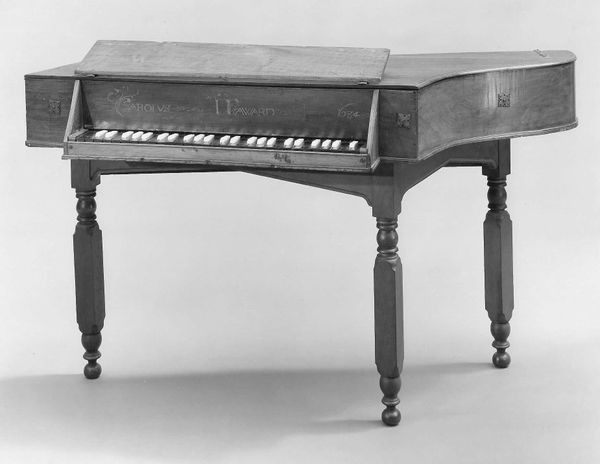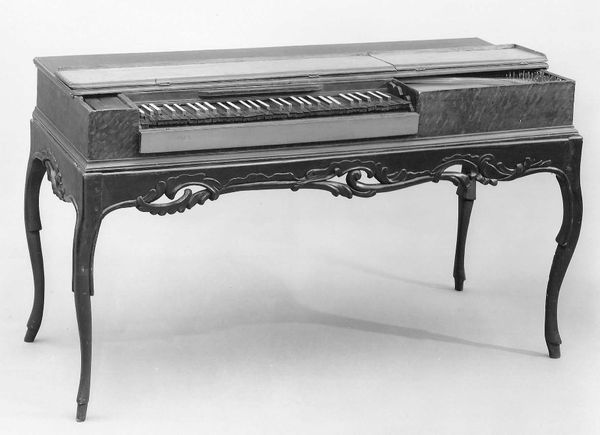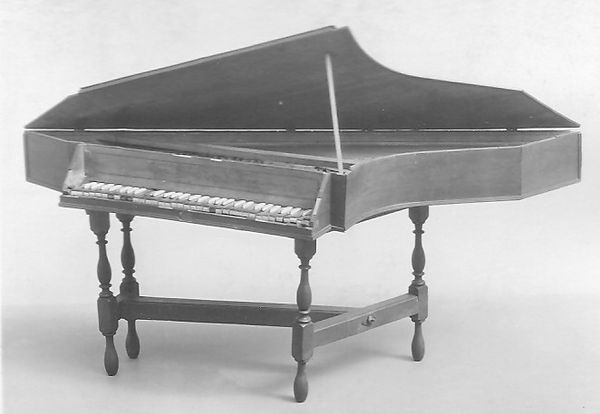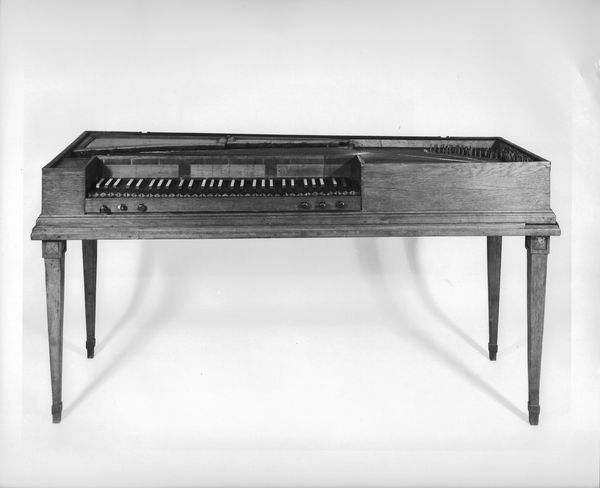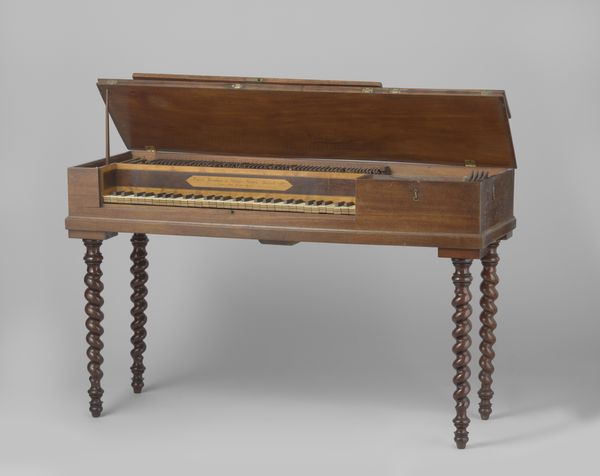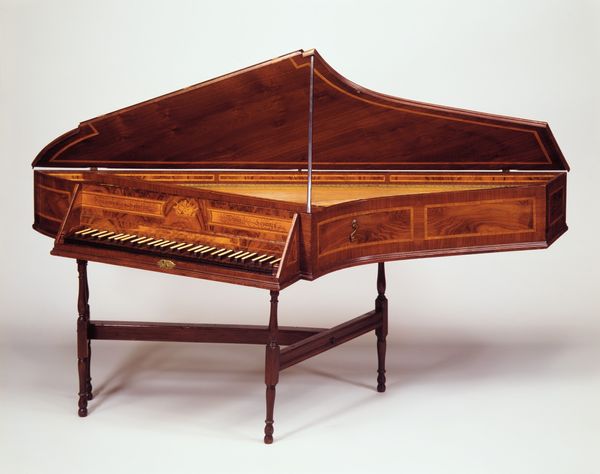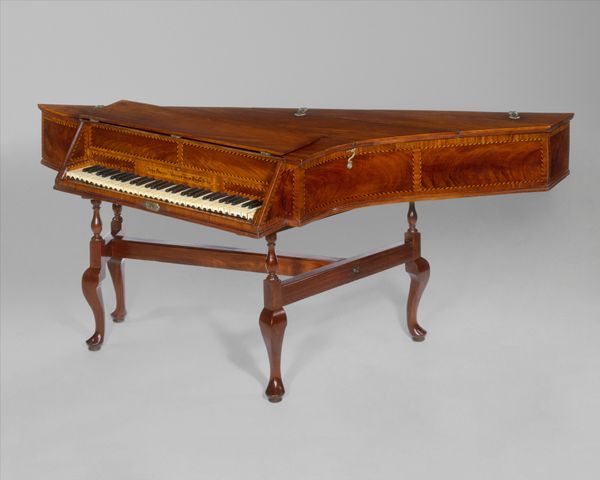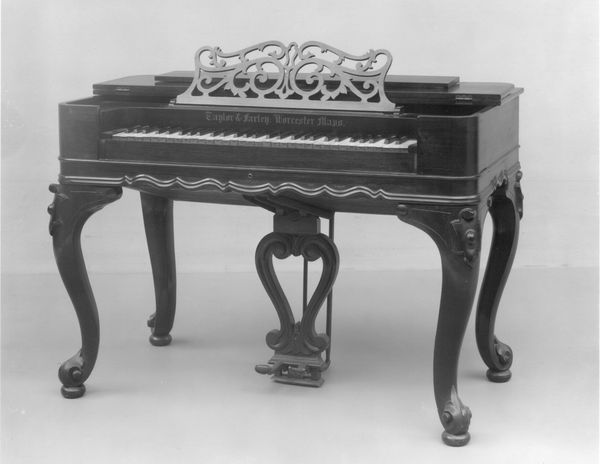
carving, wood
#
carving
#
brown tone
#
baroque
#
sculpting
#
earthy tone
#
carved
#
wood
#
decorative-art
Dimensions: 33 1/2 x 73 1/4 x 27 in. (85.1 x 186.1 x 68.6 cm)
Copyright: Public Domain
Editor: Here we have the Spinet, crafted in 1739 by Johannes Gottlob Clemm. It's largely made of carved wood. The elegant shape and earthy tone of the instrument give off such a regal and peaceful vibe. What can you tell me about it? Curator: Looking at this spinet, I see more than just a musical instrument; I see a reflection of the cultural aspirations of the 18th century. Notice the Baroque style, highly ornate and designed to impress. How do you think an object like this would have functioned in its original social context? Editor: I imagine it was a status symbol. Something for the wealthy to show off in their homes and maybe use to entertain guests? Curator: Precisely. Think about the rise of the middle class and their increasing desire for cultural refinement. The spinet becomes a tool for social climbing, a way to demonstrate taste and education. But who had access to this "cultural refinement" and at what cost? Editor: So, it’s not just a pretty object but evidence of social and economic structures. Are you saying objects like this helped to solidify class distinctions? Curator: Exactly. The politics of display are always at play. Objects become silent but powerful communicators of social status and cultural values. Editor: That's a fascinating perspective! I always thought of art as existing outside of these power dynamics. I learned that objects can function as both artistic creations and social signifiers. Curator: And by understanding that, we can see how museums and galleries continue to participate in the narratives these objects perpetuate, or hopefully, challenge.
Comments
No comments
Be the first to comment and join the conversation on the ultimate creative platform.
